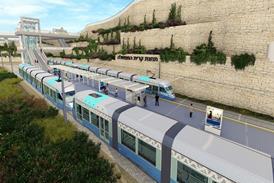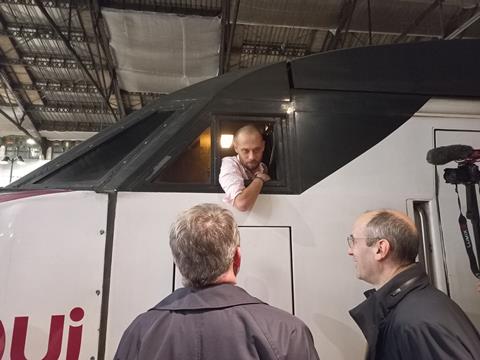
FRANCE: The government has unveiled its plans for rolling out the European Rail Traffic Management System over the next two decades, as four-day blockade was undertaken to complete a key stage in the resignalling of LGV Sud Est between Paris and Lyon.
Transport minister François Durovray joined SNCF Réseau’s CEO Matthieu Chabanel and Ile-de-France Regional Director Severine Lepère for a ceremonial last train on November 8 to mark the closure of the PAR control centre in Paris which managed the northern section of the country’s first high speed line.
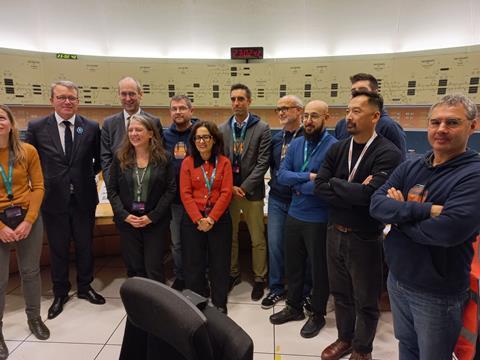
Opened in stages from 1981, the 460 km Paris – Lyon route is now carrying 460 trains/day, according to Chabanel. To provide additional capacity and reduce headways, SNCF Réseau is replacing the life-expired TVM train control technology by ETCS Level 2 under a project branded ‘LGV+’.
Development began in 2016, with installation starting in 2019 and completion anticipated for 2026. Reducing the minimum headway from 4 min to 3 min will enable the operation of up to 16 trains/h in each direction from 2030, Chabanel explained.
The resignalling represents an investment of €820m, of which €700m is coming from SNCF Réseau and €120m from the European Union. Chabanel commented that the European Commission was ‘happy to see ERTMS implementation on the principal French high speed line’.
Key elements in the resignalling include replacement of all 58 PRS relay-based interlockings by PAI digital interlockings and the construction of a new control centre at Lyon Jean Macé to replace the two existing signalboxes at Paris and Lyon. The PAI interlockings are being supplied by La Compagnie des Signaux (now part of MerMec group), while the ERTMS equipment is coming from Alstom.
Much of the installation work has been done without any disruption to traffic, but the switchover to the PAI interlockings and commissioning of the new control centre required a four-day blockade on November 9-12. More than 57 000 cables were changed over a period of 101 h, Chabanel told Railway Gazette International, suggesting that this wholesale recontrol of an entire high speed line was ‘a world première’.
Implementation strategy
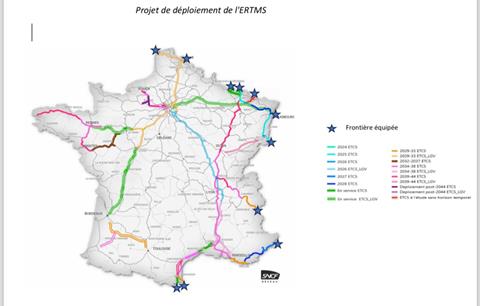
During the ceremony, Durovray confirmed that the government expected to see ERTMS in operation on 6 100 route-km of the French network by 2044, adding that SNCF Réseau’s priority routes included a mix of high speed and conventional lines.
At present, ETCS is operational on around 1 000 route-km in France. Level 2 is used on several high speed lines: Paris – Strasbourg, Tours – Bordeaux, Le Mans – Rennes, the Contournement Nîmes – Montpellier and Perpignan – Figueras. A small section of the conventional network around the Luxembourg border is equipped with Level 1.
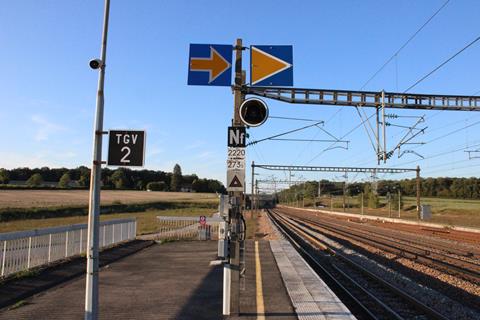
As well as the Paris – Lyon conversion, two other schemes are underway. The Marseille – Ventimiglia coastal route is being equipped with ETCS as part of the ‘Haute Performance Marseille – Vintimille’ project, with the first stage expected to go live in 2027, while the Longuyon – Basel route is being fitted as part of the North Sea – Mediterranean TEN-T corridor.
Two new lines are also due to have ERTMS: the Bordeaux-Toulouse/Dax route under the Grand Projet Ferroviaire du Sud-Ouest and the Montpellier – Perpignan high speed line. However, the previous TEN-T target of having 9 000 route-km equipped by 2030 and 11 700 km by 2040 will not be achieved.
The minister explained that the government was planning to spend €500m per year on modernisation of the rail network, including ERTMS deployment.
SNCF Réseau would roll-out ETCS on those high speed lines which are not currently equipped, prioritising LGV Nord where the current TVM equipment is ageing and LGV Atlantique where additional capacity is needed. In terms of conventional lines, the aim is to equip the North Sea – Mediterranean, Mediterranean and Atlantic TEN-T corridors, together with the Sablé – Angers – Nantes route.
Funding for the work is expected to come from the government, SNCF Réseau and the EU. Durovray said European ambitions for a wider roll-out were ‘too fast’, adding that there are currently no plans to equip the rest of the network, because of a lack of funding and human resources to undertake the necessary preparations.




